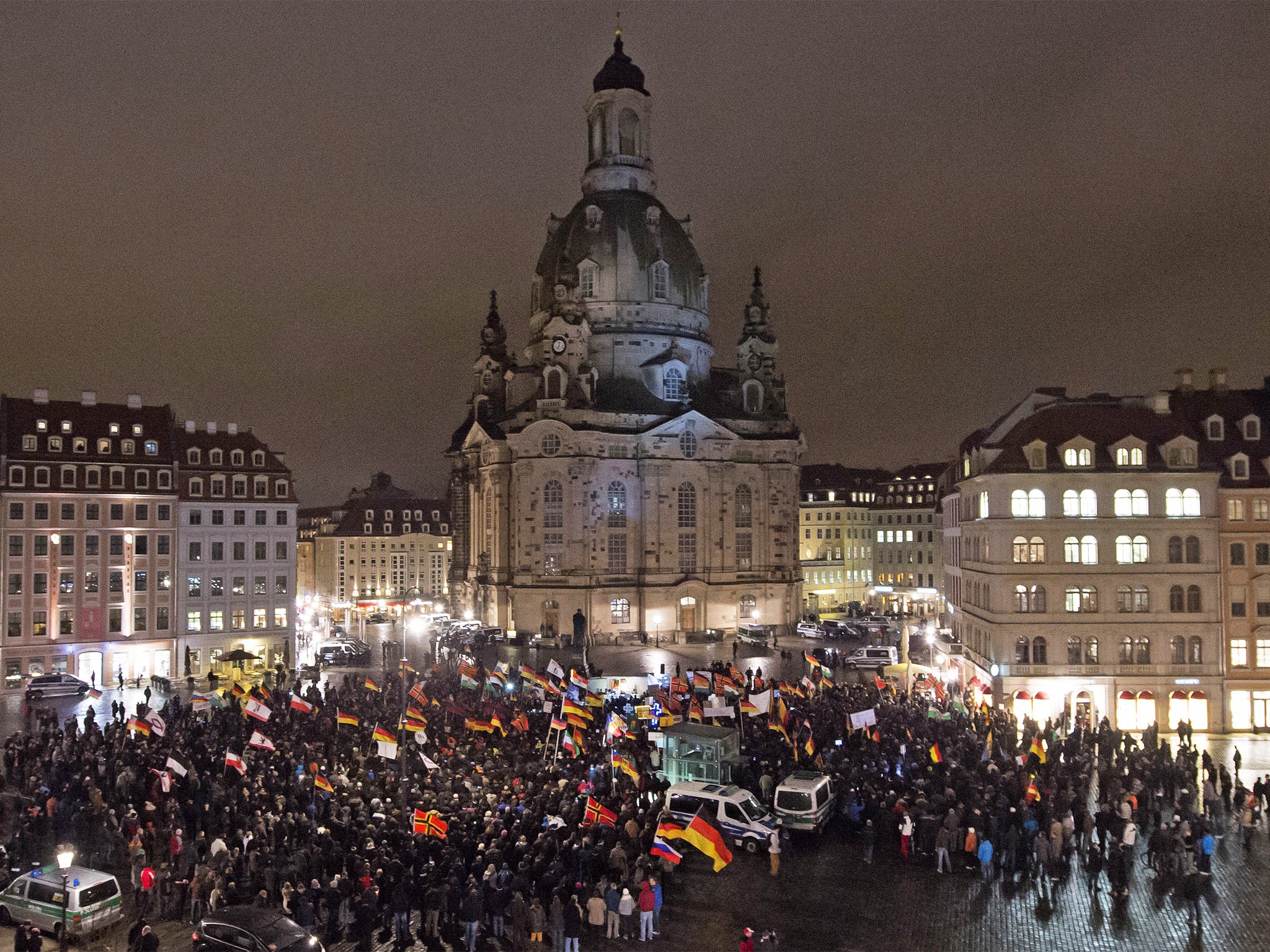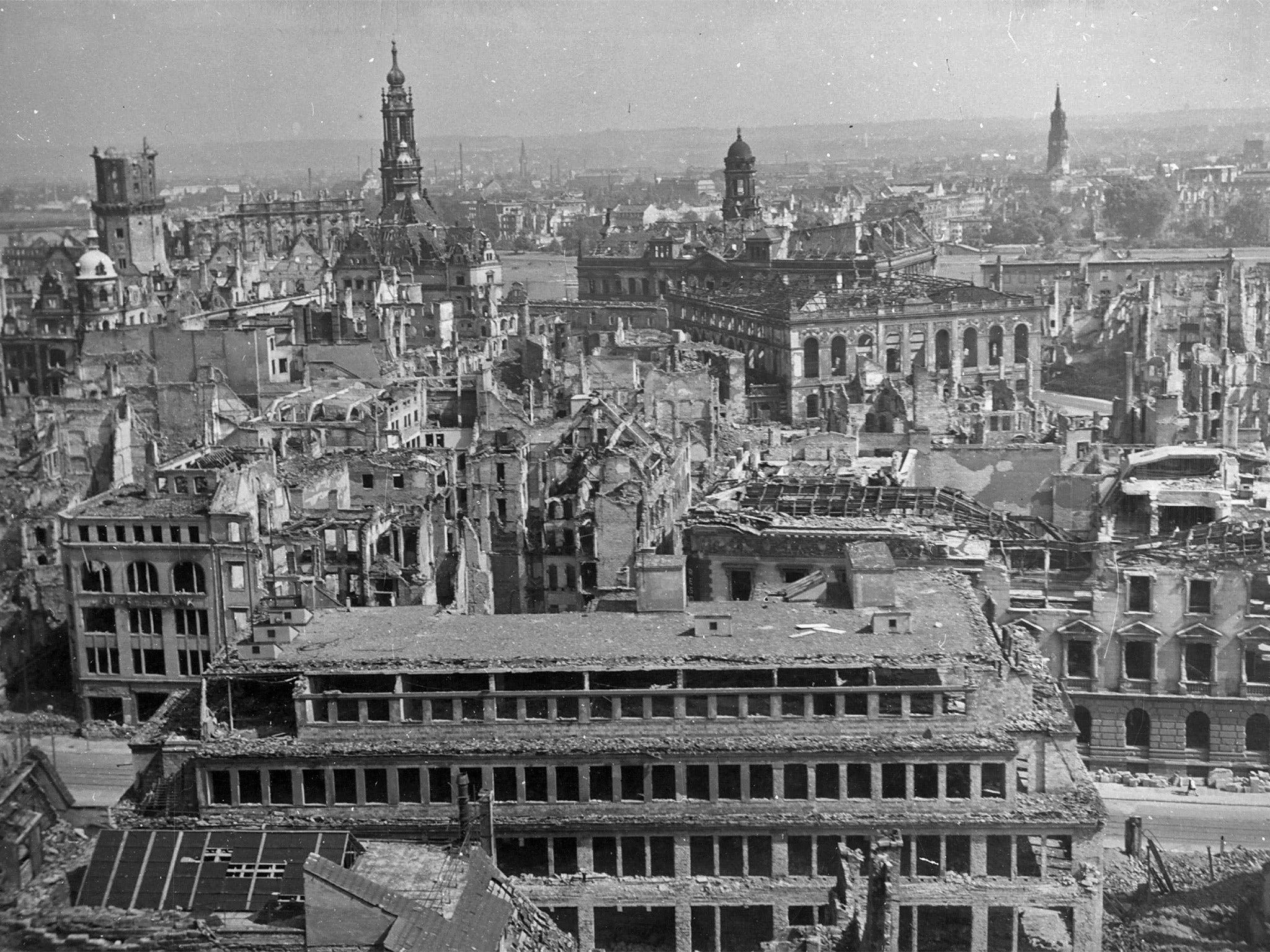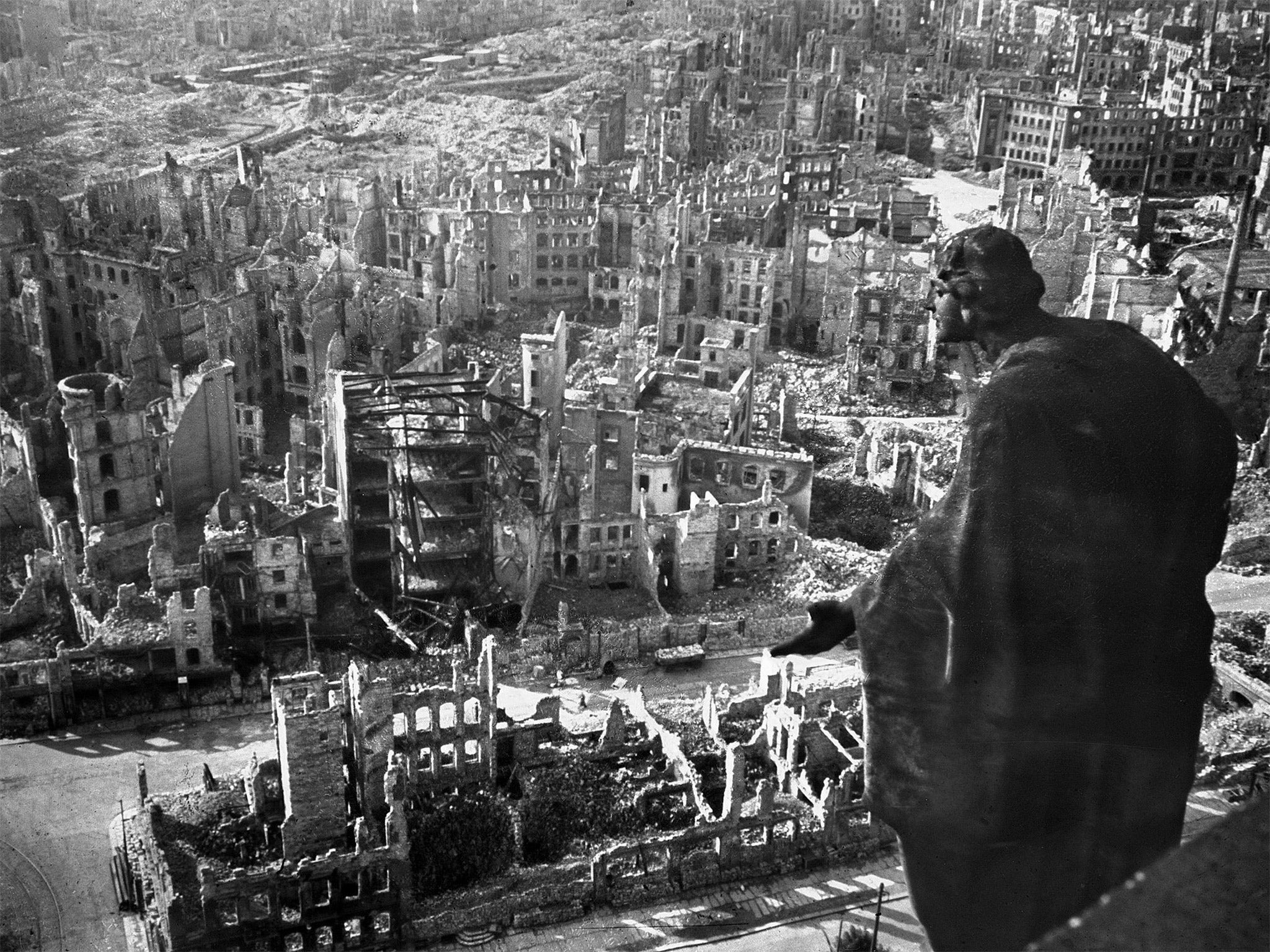Dresden Armageddon 70 years on: the shadow of extremism hangs over the birthplace of the Pegida - a city once devastated by Allied bombing during WWII
As the anniversary of the raids is commemorated on Friday, Tony Paterson looks at how resentment still lingers, providing fertile soil for far-right and anti-Muslim groups such as Pegida

Your support helps us to tell the story
From reproductive rights to climate change to Big Tech, The Independent is on the ground when the story is developing. Whether it's investigating the financials of Elon Musk's pro-Trump PAC or producing our latest documentary, 'The A Word', which shines a light on the American women fighting for reproductive rights, we know how important it is to parse out the facts from the messaging.
At such a critical moment in US history, we need reporters on the ground. Your donation allows us to keep sending journalists to speak to both sides of the story.
The Independent is trusted by Americans across the entire political spectrum. And unlike many other quality news outlets, we choose not to lock Americans out of our reporting and analysis with paywalls. We believe quality journalism should be available to everyone, paid for by those who can afford it.
Your support makes all the difference.There is nothing left of 1945 Canalettostrasse. Two and a half decades after the fall of the Berlin Wall, today the Dresden street is full of ugly communist-era housing blocks and their more modern post-communist equivalents. Only the tramlines remain.
With trembling hands, 82-year-old Eberhard Renner holds up a fading black and white photograph of Canalettostrasse. It depicts the once elegant inner-city street lined with middle-class turn-of-the-century houses where he lived until the fateful night of 13 February, 70 years ago on Friday.
Despite ambitious reconstruction programmes, vast tracts of the baroque city – painted by Canaletto and once famed as “Florence on the Elbe” – look pretty much the same. It is still impossible to ignore the consequences of Dresden’s Armageddon.
“We never thought that the British would bomb us,” recalled Mr Renner, a retired Dresden-born architect who has spent most of his life in the city. “We thought they were too cultivated to attack the city and that the war was nearly over anyway,” he added.
Mr Renner, the son of a Dresden dentist, was 12 in February 1945. On the morning before the raid, he went shopping for test tubes for his chemistry set. When he got home he played with his collection of white mice.

“We were completely unaware that something dreadful was about to happen,” he told The Independent. “I was woken by the sound of aircraft engines that night but we all thought the planes were going on to bomb other targets. Even when they started dropping magnesium flares, we thought they were just carrying out reconnaissance.”
The first wave of a total of 800 RAF Lancaster bombers began dropping their combined loads of 4,500 tons of high-explosive bombs and incendiary devices minutes later. An explosive bomb landed in the Renner family’s garden. “We were sitting, terrified, in the cellar. Then, suddenly, the massive blast blew in the door and hit my mother and I,” Mr Renner recalled. Both survived with bruises.
In the second bombing raid that followed, the Renner house was hit by fire bombs. Upstairs, a fire was tearing through the building. The family piled everything they could on to a handcart and began running away from the firestorm now raging through the city centre. They zigzagged their way down streets where the tarmac was melting from the heat of incendiary devices. “I remember my father clutching a box full of gold that was intended for his patients’ teeth,” said Mr Renner.
The family fled to relatives living 20km to the south. Mr Renner remembers returning to Dresden eight days after the attack. “The city was still ablaze. Rubble was everywhere and there was an overpowering stench of smoke and burning corpses. I saw the bodies of those whose lungs had been ripped apart from the shock waves of the bombs,” he said. The charred corpse of one woman lay on a pavement.” The arm was stretched out and on her hand was a wedding ring that gleamed in the sun. “The image still haunts me today,” he added.

The devastating Allied bombing raid on Dresden was exploited to the full by the Nazi propaganda machine. It claimed at the time that a wildly exaggerated figure of 200,000 innocent civilians had been mercilessly slaughtered by British barbarians led by Churchill and Sir Arthur “Bomber” Harris.
After 1945, Dresden fell to communist East Germany – which deliberately used the ruined city as a convenient Cold War symbol of “Anglo-American aggression”. The claim that 200,000 were killed in the bombing was never verified, and the perception of Dresden as a city singled out for particular and unparalleled victimisation prevailed.
Historians arrived at a more accurate figure for the Dresden death toll only five years ago. After a scrupulous study of burial records, residency registers and even the melting points of the limestone used for the city’s pre-war buildings, an historical commission concluded in 2010 that at most 25,000 had been killed in the bombing, but that more likely 20,000 had died.
“Dresden was an average Allied raid. More people were killed in the bombing of Hamburg,” said historian Thomas Widera, of Dresden’s Hannah-Arendt institute, who was part of the commission. He points out that the concentrated destruction of the city was largely due to the fact that there was no cloud cover. In pre-GPS days, it was vital for bomber crews to see their targets with the naked eye. “For once the firestorm tactic worked,” he said.
Architects like Mr Renner blame the concrete wasteland that still occupies much of the city centre on communism. He recalls the ardour with which East German officials opposed reconstruction and opted instead for brand new, and mostly hideous, functional buildings. “Most of Dresden had houses with stone staircases which survived the bombing – the city could have easily been rebuilt,” he said.
Dresden’s self-perception as a “victimised city” has partly prevailed despite the historians’ findings. Hans Vorländer, a Dresden political scientist, maintains that the city is still more backward than forward-looking. “Victim mythology plays a key role in the city’s collective cultural identity,” he says. “Little attention has been paid to the fact that Dresden was also a Nazi stronghold,” he adds.
The city’s collective self-image may also explain why it recently served as the birthplace and stronghold of Germany’s xenophobic “Pegida” movement. Patriotic Europeans Against the Islamification of the West attracted up to 25,000 supporters to its rallies in Dresden last month. To the delight of Germany’s mainstream politicians, the movement has since split up and appears to be on the wane.
On Friday, Dresden will hold ceremonies marking the 70th anniversary of the bombing. The city authorities are hoping that a hitherto silent majority of tens of thousands of Dresdners will take to the streets to show that the city is opposed to movements like Pegida and stands united as a symbol of reconciliation and tolerance.
Subscribe to Independent Premium to bookmark this article
Want to bookmark your favourite articles and stories to read or reference later? Start your Independent Premium subscription today.